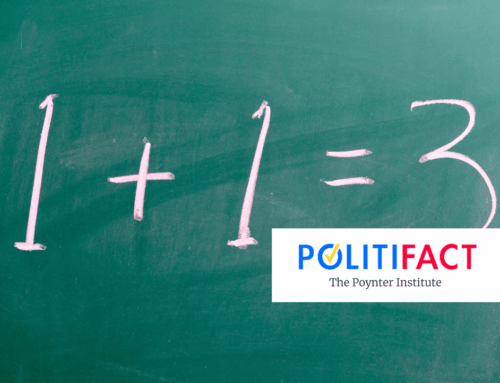The Congressional Budget Office (CBO) has just dropped its latest bombshell: the federal budget deficit for fiscal year 2024 is projected to be nearly $2 trillion. In fact, the only reason that it isn’t $2 trillion is because the fiscal year starting on a weekend meant certain payments were made in fiscal year 2023 instead of 2024. Regardless, that’s a cool $400 billion more than what was projected back in February, marking a 27 percent increase in just four months. If you’re wondering how we got here—and we know you are—here are the deets.
Ten More Years of Increasing Deficits
First off, let’s talk about the 10-year outlook. From fiscal years 2025 to 2034, the cumulative deficit is projected to be a jaw-dropping $22.1 trillion. That’s $2.1 trillion, or 10 percent, more than what was projected just a few months ago. So, what’s driving these astronomical numbers? Spoiler alert: it’s the choices our lawmakers are making or not making.
One of the biggest culprits is increased spending on disaster relief. Remember those natural disasters that seem to be happening more frequently? Well, they cost money—lots of it. And then there’s lots of other spending priorities from student loan forgiveness programs to foreign assistance, which, while well-intentioned, are adding billions to the deficit. Combine these with higher interest rates, and you’ve got a recipe for an exploding national debt.
The CBO’s projections might actually be underestimating future spending growth. Why? Because they assume that the Fiscal Responsibility Act (FRA) caps will be in place in 2025, and that spending will only grow with inflation. But let’s be real—when has government spending ever stuck to such modest growth? Exhibit A: the Senate Armed Services Committee just approved a $25 billion increase in the Pentagon topline from what was in the FRA. The CBO also assumes that the individual income tax provisions of the 2017 Tax Cuts and Jobs Act (TCJA), including statutory tax rates, brackets, deductions, the child tax credit, and the 20 percent deduction for certain business income, will expire as scheduled at the end of 2025. This is a pretty optimistic view given their popularity.
It’s important to remember that these CBO numbers are benchmarks, not predictions. Especially when it comes to discretionary spending, which Congress gets to decide on every year. Discretionary funding requires an act of Congress, and we all know how unpredictable that can be. Plus, these projections can’t account for unexpected shocks to the system, like a pandemic or an economic crisis. But Congress does control how they respond to such events, and their responses often involve more spending.
The CBO also warns that two major trust funds are heading towards insolvency over the next decade, just to add a bit more fiscal stress to our already tight budgets. The Highway Trust Fund is expected to run dry by fiscal year 2028, and the Social Security Old-Age and Survivors Insurance (OASI) Trust Fund is projected to be empty by 2033.
Once these funds hit zero, the law demands across-the-board spending cuts to match whatever revenue trickles in. Translation: unless Congress steps in with new legislation or funding strategies, we’re looking at automatic cuts to benefits and services. For the Highway Trust Fund, this spells trouble for federal support for road and infrastructure projects, likely leading to a halt in critical maintenance and development. For the OASI Trust Fund, it means cuts to Social Security benefits, hitting millions of retirees who depend on these payments.
Deficits and Interest: The Twin Terrors
Here’s where it gets really scary. In the CBO’s projections, total deficits equal or exceed 5.5 percent of GDP every year from 2024 to 2034. To put that in perspective, since at least 1930, deficits have not remained that large for more than five years in a row. Over the past 50 years, the total annual deficit has averaged 3.7 percent of GDP. So, we’re in uncharted territory here.
And then there’s the interest to service the nation’s debt. Since 1940, net outlays for interest have never exceeded 3.2 percent of GDP. But in the CBO’s baseline, such outlays exceed that percentage every year from 2025 to 2034.
Over the 10-year projection period, primary deficits—which exclude these outlays—in the CBO’s baseline average 2.5 percent of GDP. In the 62 years from 1947 to 2008, primary deficits exceeded 2.5 percent of GDP only twice. In the past 15 years, though, they have exceeded that percentage 10 times, thanks in part to legislation enacted in response to the 2007–2009 financial crisis and the COVID-19 pandemic.
So, what’s the takeaway? We have to do something different. The current trajectory is unsustainable, and if we don’t change course, we’re going to be in serious trouble. The CBO’s report is a wake-up call, and it’s time for our lawmakers to take it seriously. Putting the country on the right fiscal track gets harder the longer policymakers wait. Whether it’s cutting spending, raising taxes, or a combination of both, something’s got to give. Otherwise, we’re just kicking the can down the road, and the road is running out.
The CBO’s latest update is a sobering reminder of the fiscal challenges we face. The impending insolvency of the Highway and OASI Trust Funds is a glaring reminder that policymakers need to find long-term funding solutions ASAP to prevent major disruptions and keep these essential programs running. The deficits are out of control, and the interest on the debt is going to eat us alive. It’s time for a serious conversation about how to get our fiscal house in order. Because if we don’t, the consequences will be dire.
That’s why TCS has supported the creation of a bipartisan, bicameral fiscal commission that can recommend the hard choices and policy shifts to put the country on the right track. We’re not talking about eliminating the debt or even balancing the budget, let’s face it the U.S. has been in debt all but a couple years of its existence. It is about shrinking the debt as a percentage of Gross Domestic Product so it is not such a burden on the economy.









